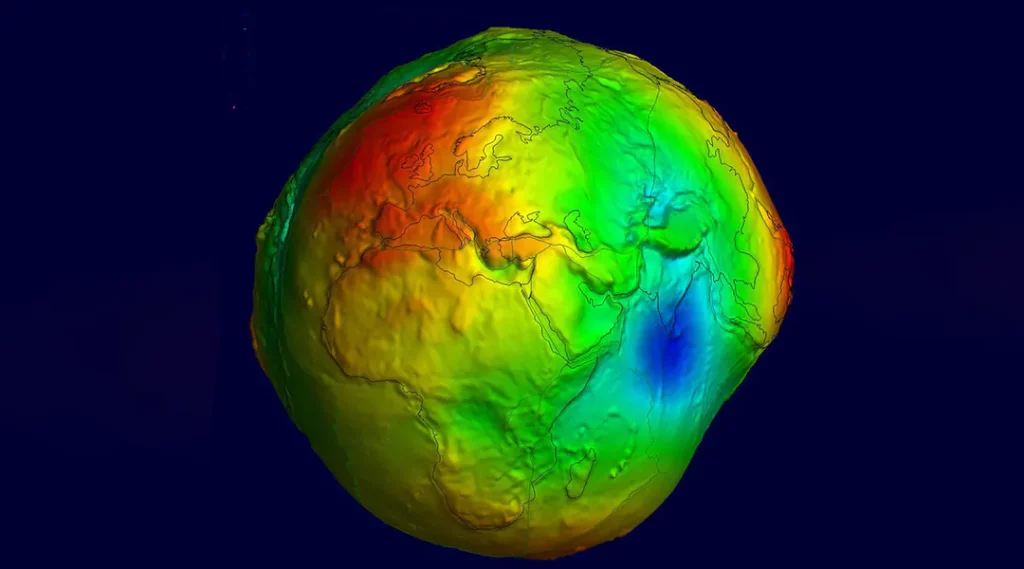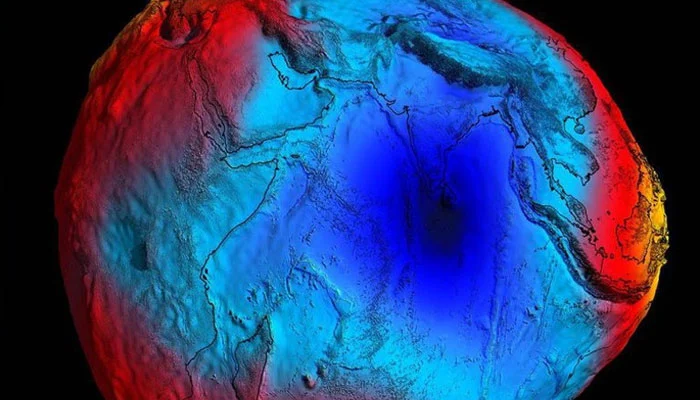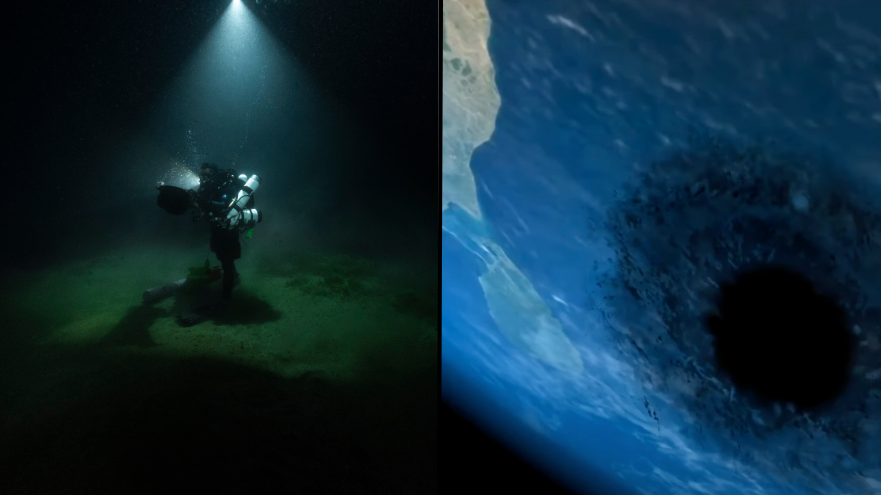A ‘gravity hole’ in the Indian Ocean has perplexed scientists for decades, but new research has revealed a probable explanation.
Low-density ‘gravity holes’ can be found all throughout the world, including beneath Cuba and the Bahamas. However, the Indian Ocean geoid low (IOGL), which forms a circular depression just off India’s southern coast and spans 1.2 million square miles and generates a 328-foot drop in sea level, has perplexed scientists for decades.
During a gravity study from a ship, Dutch geophysicist Felix Andries Vening Meinesz found the anomaly in 1948.
‘Gravity holes’ are areas where the Earth’s gravitational pull is less, and geologists have long been perplexed by IOGL’s peculiar properties.

Researchers from the Indian Institute of Science in Bengaluru, India, and the GFZ German Research Centre for Geosciences have identified what they think to be a convincing explanation for the origin of the IOGL.
It all comes down to plumes of magma rising from deep below the Earth, similar to those in the Earth’s mantle that cause volcanoes to emerge.
The scientists arrived at this notion by running 19 simulations on supercomputers to reconstruct the origin of the Earth to see how the area would have evolved 140 million years ago. Researchers published their findings in the journal Geophysical Research Letters in May of this year.

All of the models indicated the presence of magma plumes in the Earth’s mantle. According to the study’s co-author Attreyee Ghost, these plumes arose as a result of the drifting and eventual collision of India’s subcontinent with Asia 40 million years ago. According to estimates, IOGL developed roughly 20 million years ago.
Contrary to popular perception, the Earth is not a perfect spherical. “The Earth is basically a lumpy potato,” said Ghosh, a geophysicist and associate professor at the Indian Institute of Science’s Centre for Earth Sciences.
“Technically, it’s not a sphere, but an ellipsoid, because the middle part bulges outward as the planet rotates.”

The density and attributes of Earth are not uniform, and certain parts are denser than others, affecting our planet’s surface and gravity, according to Ghost.
“When you pour water on the Earth’s surface, the level that the water takes is known as a geoid, and it is controlled by these density differences in the material inside the planet, because they attract the surface in very different ways depending on how much mass there is beneath.”
“140 million years ago, India was in a very different place, and there was an ocean between the Indian plate and Asia.” As India began to move north, the ocean receded and the gap with Asia narrowed.”
Download The Radiant App To Start Watching!
Web: Watch Now
LGTV™: Download
ROKU™: Download
XBox™: Download
Samsung TV™: Download
Amazon Fire TV™: Download
Android TV™: Download

